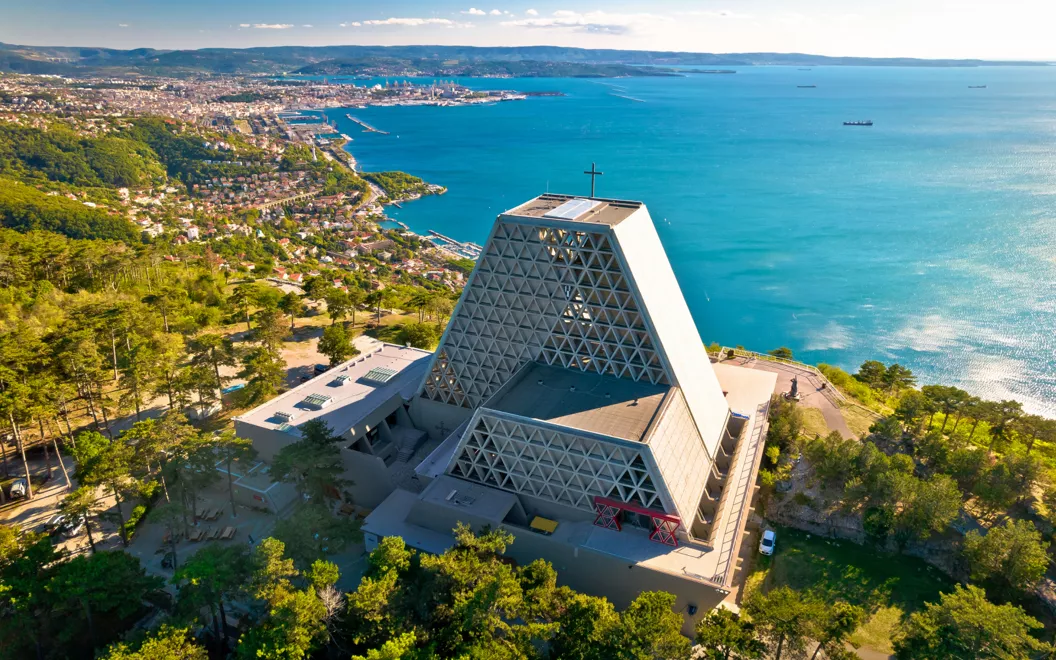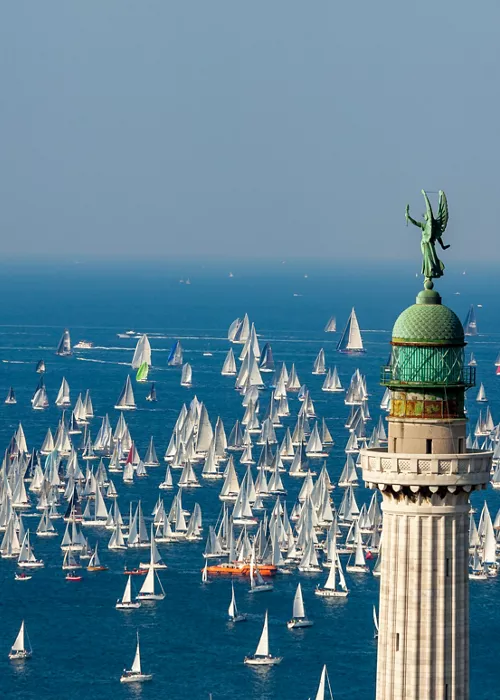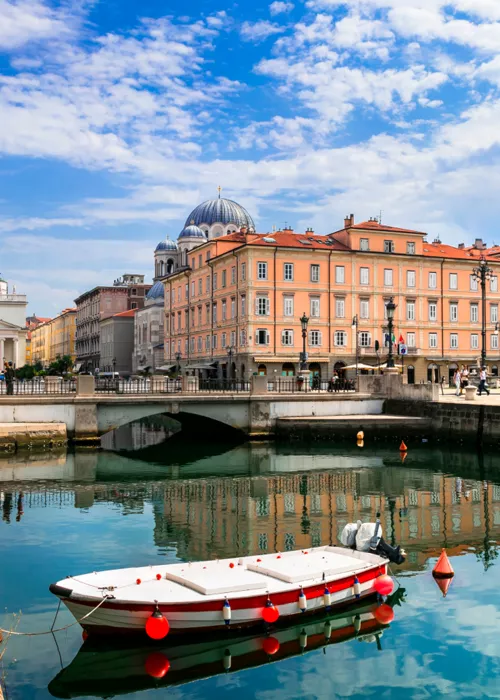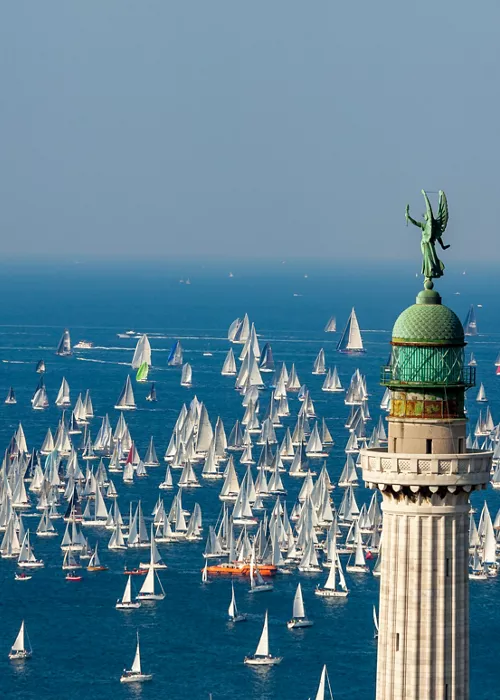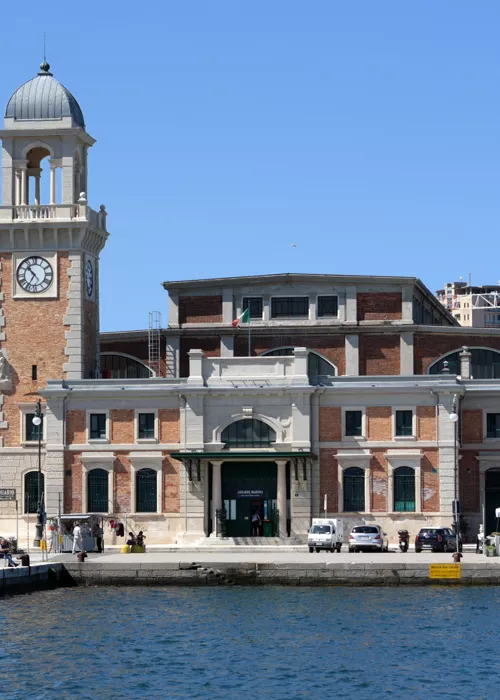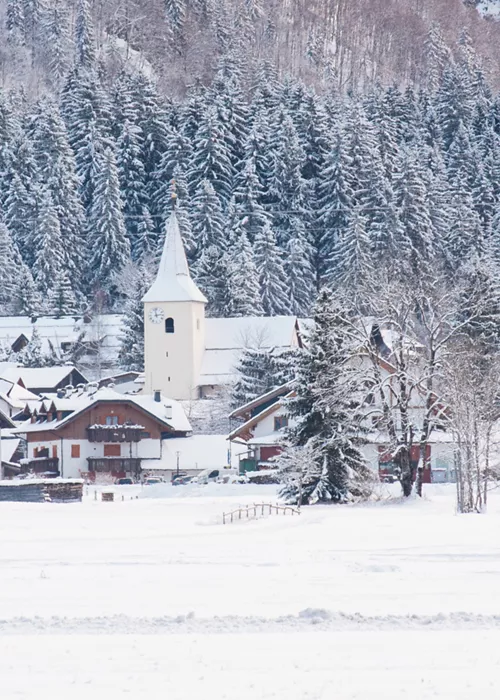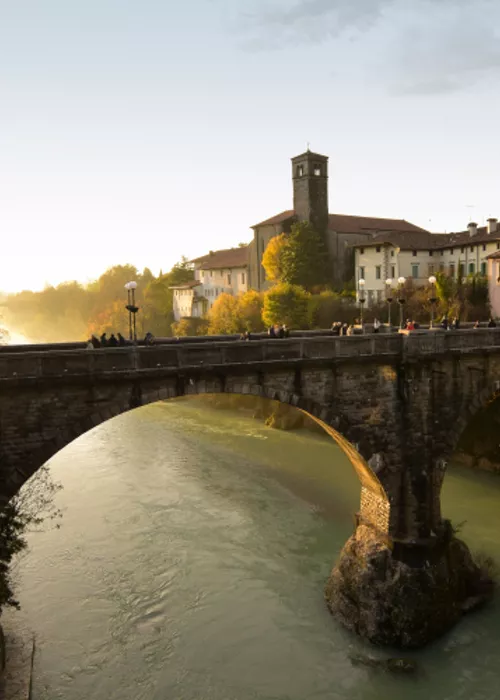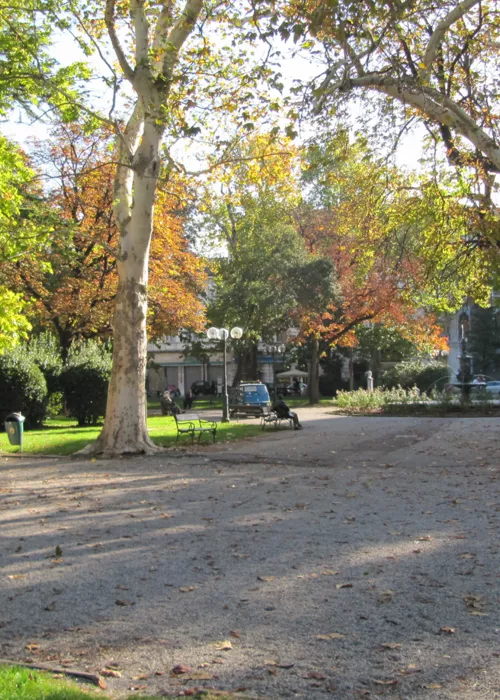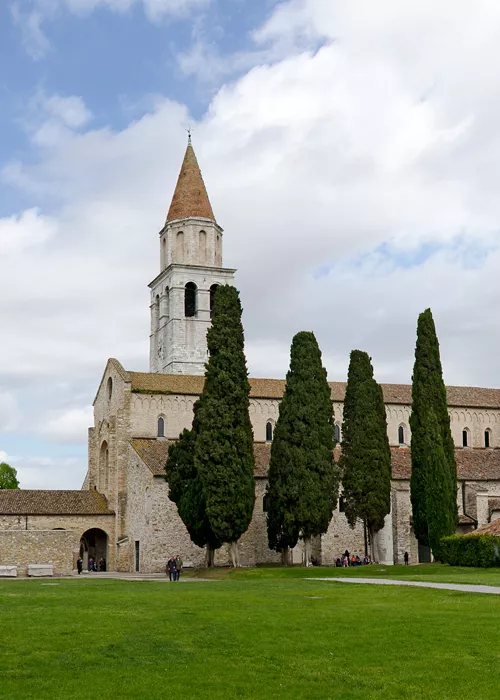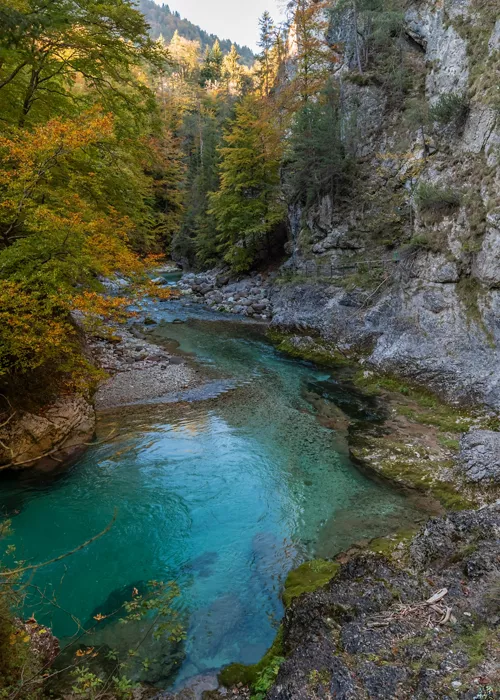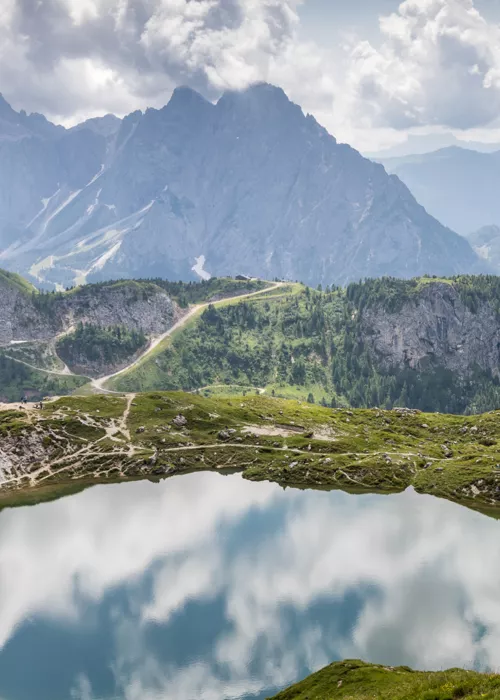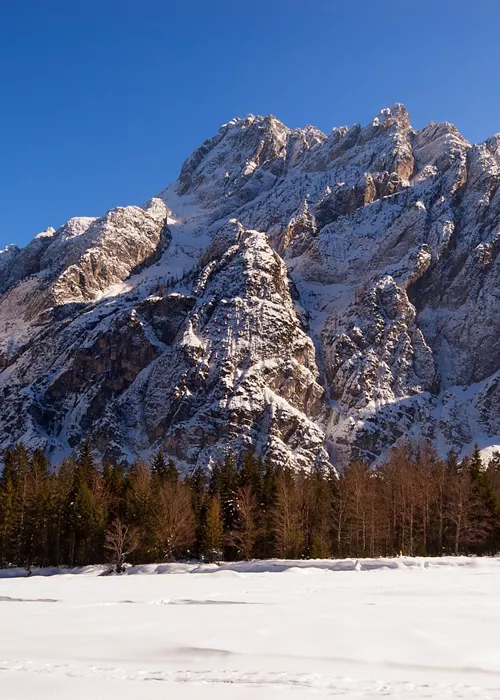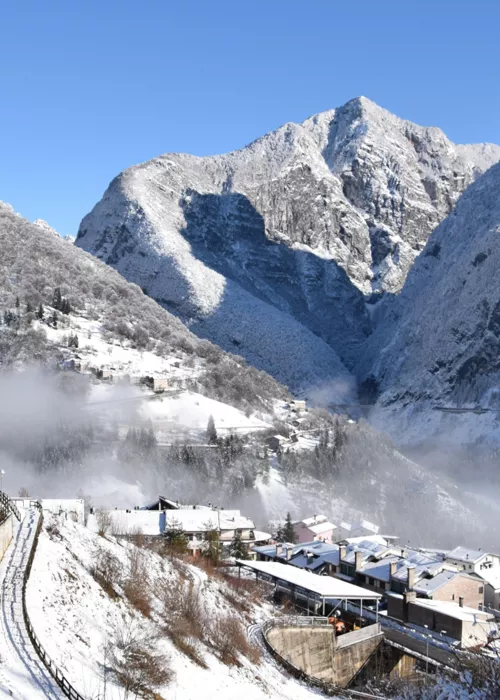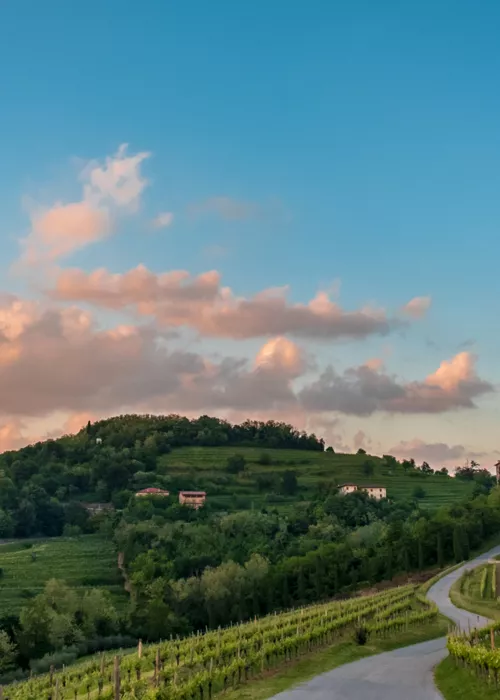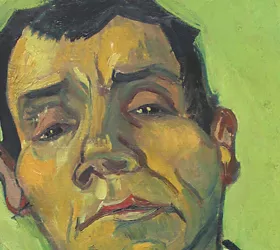The Sanctuary of Monte Grisa in Trieste, symbol of peace and friendship between West and East
2 minutes
It is the National Temple to Mary Mother and Queen of Monte Grisa named after the hill that hosts it, three hundred metres above sea level.
A monument that certainly does not go unnoticed, even at night, because it is always illuminated.
The history of “Formaggino”

Nicknamed “the little cheese” by the locals because of its triangular shape, it was born from a story of faith and hope, which deserves to be told.
In 1945, Archbishop Antonio Santin made a vow to Our Lady to save Trieste from the destruction of war. Once the conflict was over, in 1948 Monsignor Strazzacappa proposed the building of a temple of national interest dedicated to the Virgin Mary, with the collaboration of all the dioceses in the country. His idea, published in the magazine Settimana del Clero (Clergy Week ), received much attention, so the initiative began to take shape, and in 1959 Pope John XXIII decided that the temple would be dedicated to Mary Mother and Queen.
The Wonder Pilgrimage
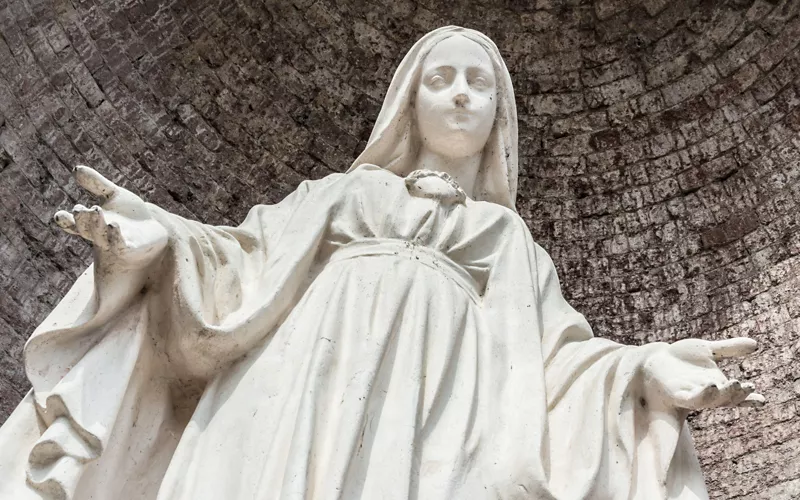
On 19 September 1959, the foundation stone of the temple was laid, the highlight of the so-called “wonder pilgrimage”. The pilgrimage was desired by the Italian Bishops' Conference and was held in Rome in 1958, with the aim of rekindling devotion to Our Lady throughout Italy.
The pilgrims' journey, which started in Sicily in 1959, involved the statue of Our Lady of Fatima passing through all the provincial capitals of the country, as far as Trieste, the last bastion before Communist Europe.
The Temple is also a symbol of union and peace between East and West.
The reason for the triangle structure
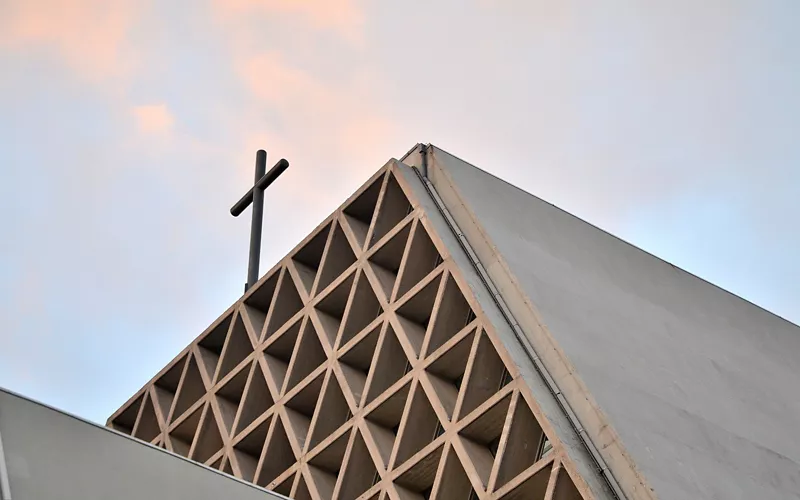
The Sanctuary of Monte Grisa in Trieste was designed by engineer Antonio Guacci of the city's University from a sketch by Monsignor Santin.
An example of Brutalist architecture, typical of the 1950s , the reinforced concrete structure refers to an isosceles triangle, a recurring figure in religious symbolism.
In the language of the Bible, the triangle evokes God's transcendence, but in the shape of the Temple it is also easy to discern the letter “M” as a symbol of Mary.
Inside the building there are two churches, a low one, symbolising humanity, and a high one, hinting at the divine. The main altar, dedicated to the Unknown Soldier, recalls the drama of war, while at the entrance an important message encapsulates the meaning of the very existence of this place: "Unity in plurality is achieved when we look upwards, where we see more of what unites rather than what divides".
The building was consecrated on 22 May 1966, when pilgrimages from Italy and abroad began.
How to Visit the Temple
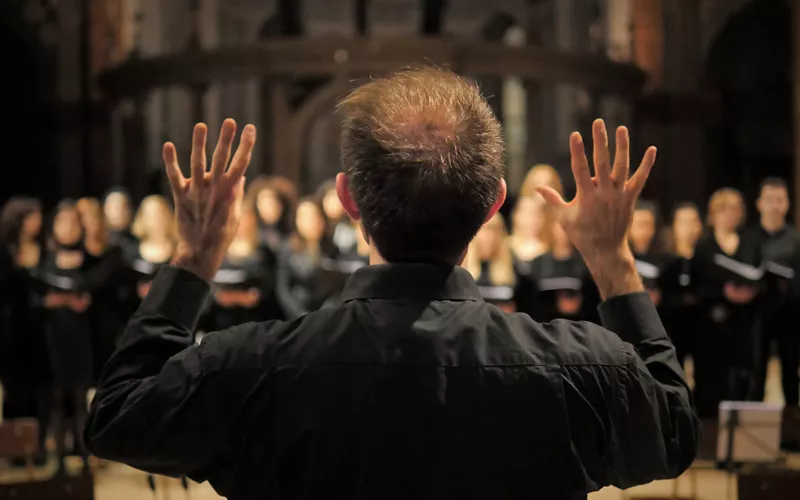
After a series of maintenance works, mainly due to the collapse of the roof, the acoustic systemin the National Temple to Mary Mother and Queen of Monte Grisa was rebuilt in 2007 and an organ was installed.
Since 2011 , there has been a Gregorian choir in the shrine , which sings during religious celebrations. Daily visits are possible from 7.30 a.m. to 8 p.m.
Reaching it is very easy: those arriving by car can park close to the sanctuary. There is also a restaurant/bar and a bookshop in the area.

